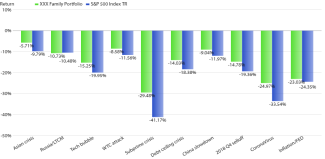
Why Downside Protection Is Critical for Retirees
Downside protection is a crucial element in an investment portfolio, particularly for retirees, due to the unique financial circumstances they face. Retirees rely on their investment portfolio to sustain their lifestyle and cover essential expenses throughout their retirement years. Given that retirees typically have a reduced capacity to recover from financial setbacks due to a fixed income and limited time horizon, safeguarding their investments against market downturns becomes paramount.
Here's why downside protection is so important for retirees:
1. **Preservation of Capital:** Retirees have limited opportunities to replenish their savings through employment, making it essential to protect their capital. Downside protection strategies, such as diversification, can help minimize losses during market downturns, preserving the value of the portfolio over time.
2. **Income Reliability:** Many retirees depend on their investment income to meet their day-to-day expenses. Without proper downside protection, a significant market downturn could lead to a reduction in dividend payouts, interest income, or other income sources, potentially disrupting their financial stability.
3. **Longevity Risk:** Retirees often face the challenge of funding a retirement that could last for decades. Downside protection measures, such as allocating assets across various investment types (stocks, bonds, real estate, etc.), can help mitigate the impact of market volatility and ensure the portfolio remains sustainable throughout their retirement years.
4. **Psychological Well-being:** For retirees, the emotional toll of significant portfolio losses can be particularly challenging. Downside protection strategies can provide peace of mind, helping retirees avoid the stress and anxiety that can arise from watching their savings diminish during market downturns.
5. **Limited Earning Potential:** Unlike younger investors, retirees have less time to recover from market losses. Thus, focusing on downside protection helps minimize the need to sell investments at unfavorable times, allowing retirees to avoid locking in losses and supporting the potential for recovery when markets rebound.
6. **Reduced Risk Exposure:** With a lower risk tolerance and reduced capacity for risk-taking, retirees need to prioritize stability over high returns. Implementing strategies that balance risk and potential reward can help retirees maintain their financial security without exposing themselves to undue market risk.
7. **Changing Investment Goals:** As individuals transition from accumulating wealth to distributing it during retirement, their investment goals shift. Downside protection ensures that their evolving financial needs are met and that their investments align with their changing circumstances.
In conclusion, downside protection is a cornerstone of any retirement investment strategy. It safeguards retirees' financial well-being by minimizing the impact of market volatility, ensuring a reliable income stream, and allowing for a more secure and stress-free retirement. By adopting appropriate strategies and diversifying their portfolios, retirees can position themselves to navigate market fluctuations and enjoy a stable financial future.

